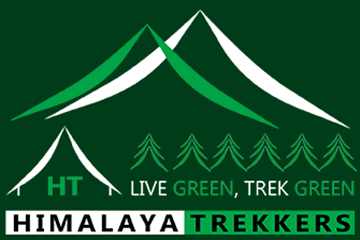Is it good to go on treks in the Darjeeling-Sikkim area during late May or early June? Certainly it is not the best of your choices, but you can’t shift your plan.
My family of four (my husband and me and our 2 sons, aged 8 and 10) will arrive in Darjeeling on May 28th.
As a part of our six months of travelling we are very interested in multiple day treks in the region, both in West Bengal and Sikkhim.
What comes to mind is the Singalila-ridge trek and Yuksom Dzongri trek.
We have a time-window of approx 17 days, leaving for New Delhi on June 14th.
Since we are trekking in the Andes mountains in Peru this month, acclimatisation to high altitude should not be a problem.
We are looking for an organized trek with a local guide for the both treks.
Is this something your organisation can help us with?
So here is our understanding and what you should be prepared for:
We would be more than happy to arrange a tour of West Bengal and Sikkim for your family. It will be a pleasure for us.
Although we don’t have any group tours scheduled during the time you plan to visit. Alternatively we can always customise a tailor made private tour for you as per your available dates and preferred services.
You may have done your research and found that the end of May to mid-June is towards the end of trekking season in the Darjeeling-Sikkim area. The monsoon arrives in the eastern Himalayan belt by early June. Prepare for some to moderate rain, which is normal in this area during your time of visit. The usual cloudy or misty weather occurs during the daytime, and rain occurs in the afternoon, evening, and at night. Also, prepare for a few days when it can rain in the morning as well. There are multiple days on the trail when you may get to see the grand mountain views. Best bet is the the time of sunrise till 8-9 am.
So we may conclude that this is not really a good time to get the big mountain views or the postcard photos.
However, take the above with a pinch of salt; climate change has already impacted the Himalayas, and you may get fairly “good” weather as well, without much rain. In general, we observe that the monsoon has a tendency to come at a later time in the Indian Himalayas in the recent years. It is better to be mentally and logistically prepared for the conditions so that you can complete the entire trek safely with your family.
Otherwise, if you like to witness the unique Eastern Himalayan flavour, its forest, and its biodiversity, this is indeed a very good time. With its misty and moist surroundings, moss and lichen shades, dark evergreen trees, gushing streams, and waterfalls create their own atmosphere to support an abundance of fauna during this time.
Warmer weather is conducive and helps the leeches grow as well, especially up to 3000 m/10000 ft. Watch out on the trail and check your shoes and shock once you finish the day’s trek.
We may arrange a trek on Singalila Ridge, either the shorter walk till Sandakphu (approximately 45 Km walk) or the longer loop that includes Phalut (approximately 70 Km). Note that due to the stay restriction on foreigners in Nepal side, you can only stay inside India, i.e., in West Bengal at Tonglu, Sandakphu, and Phalut in the basic Govt. operated GTA Trekkers Hut, in addition to these private lodges or homestays at Maneybhanjung, Timburey (for Sandakphu only), or Gorkhey (including Phalut).
While the Singalila Ridge offers you panoramic Himalayan views, the Dzongri Trek will take you very close to the Himalayas. This would require a full camping logistics setup to follow our suggested itinerary given on the website. Although you get Trekkers Hut at Tsokha and Dzongri, there is nothing in between. Also, the huts don’t provide a bed or bedding to sleep on. Availability of food depends upon the residing caretaker and what he has in his stock. In the event of heavy rain in the evening or at night, these huts come in handy.
It is great to know that you will come to India already after some hiking experience at altitude. However, we would like you to consider a few things before you plan:
1) How difficult can this be for the kids? Back-to-back two moderate treks (if you choose Phalut and Dzongri) when rain is likely during the walk? Your more inputs on this will help us to understand and suggest accordingly.
2) At Dzongri, you will be sleeping at 4000 m, although after sufficient acclimatisation as per the given itinerary.
You may also like to read this article for a general understanding of trekking in the Indian Himalayas.
Please feel free to get in touch in one of the following ways:







Comments